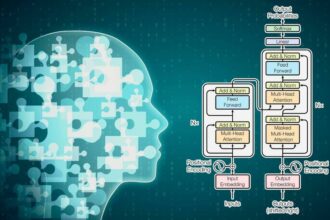What is LLM Model Grounding?
Ah, LLM model grounding – the secret sauce to make those complex language models not just smart but Sherlock Holmes-level investigative! 🕵️♂️ Imagine your LLM as a witty detective who can crack any linguistic code if given a little grounding boost – that’s where the real magic happens!
Let’s dive into the world of LLM grounding like we’re on a quest for hidden treasures! 🌟
So, what exactly is LLM model grounding and why is it such a big deal? Well, picture this: you have this impressive Large Language Model that knows its way around words, phrases, and sentences. But here’s the kicker – it lacks that crucial link to reality. It’s like having all the ingredients for a gourmet meal but missing the recipe!
Enter LLM grounding – the mystical bridge that connects your language-savvy model to real-world facts and figures. It’s like giving your brainy robot a dose of street smarts! 🤖💡
Now, brace yourself as we unravel the secrets of LLM grounding step by step:
Large Language Model (LLM) Grounding: Ever heard of common-sense grounding or semantic grounding? These are all fancy terms for what essentially amounts to giving your AI buddy some worldly wisdom. By merging your in-house data with its vast public knowledge base, you’re basically turning your LLM into an AI rockstar ready to rock your data world!
Why Go Gaga Over LLM Grounding? LLMs are like brainy but clueless interns without grounding. They know stuff but lack that oomph that comes from understanding your specific business lingo. And let’s face it, nobody wants a Shakespearean soliloquy when you ask for today’s sales figures.
Saviez-vous: Grounding helps prevent AI ‘hallucinations,’ those awkward moments when your AI sounds more like an alien than an assistant!
Now, let’s talk about challenges in this magical journey: Embodiment: Linking text to real-life objects isn’t as easy as waving a wand – it’s more like finding Nemo in an ocean of words! Data Ambiguity: Real-world data can be messier than a toddler after spaghetti night! Overcoming inconsistencies is key. Contextual Understanding: Imagine telling Shakespeare jokes at NASA – context matters! So does making sure your LLM gets it. Knowledge Representation: Balancing human-like cognition with silicon-based processing? It’s like juggling apples and oranges – quite the challenge indeed! Facing these hurdles head-on will ensure smooth sailing through the realms of LLM greatness.
Alright, here comes the fun part – different approaches to ground your precious LLM: Retrieval Augmented Generation (RAG): Think of RAG as giving your digital assistant VIP access backstage; it fetches data in real-time so your AI shines brighter than Beyoncé under stage lights! Fine-Tuning: Like training for a marathon tailored specifically to running marathons – fine-tuning makes sure your AI is geared up for its unique tasks without breaking too much sweat or bank!
But hey, don’t just take my word for it! Keep reading ahead to discover more about fine-tuning techniques and how RAG can revolutionize interactions between humans and machines.
Ready to embark on this thrilling journey through the virtual realms where language meets logic? Stay tuned – there’s more exciting adventures awaiting us in our quest for mastering LLM models! 🚀📚
Table of Contents
ToggleThe Importance of LLM Grounding
In a nutshell, LLM grounding is the secret ingredient that makes your language model not just smart but street-smart! 🧠🌟 Think of it as the bridge that connects your AI buddy to real-world facts, preventing those awkward AI “hallucinations” where it sounds more alien than assistant. It’s like giving your brainy robot some worldly wisdom!
When you ground your LLM with Retrieval-Augmented Generation (RAG), you’re essentially exposing it to your proprietary knowledge bases or business systems. This linking of words and phrases to real-world references leads to more accurate responses, fewer hallucination issues, and less need for human intervention during user interactions.
The necessity of LLM grounding stems from the fact that these models are reasoning engines, not data warehouses. While they grasp general language intricacies, they lack specific contextual understanding crucial for industry applications. Grounding acts as an enhancement, acquainting them with nuances unique to your organization.
The importance of LLM grounding in an enterprise setting cannot be overstated. By infusing domain-specific knowledge into these models, organizations witness improved AI capabilities that directly tackle challenges encountered in deploying AI technologies in specialized environments.
So how does this magic happen? 🎩✨ LLM grounding happens through meticulously designed stages where lexical specificity plays a vital role. By tailoring the model to the organization’s lexicon and concepts, it gains a profound understanding of industry-specific language and terminology. This exposure helps create a customized environment for your AI buddy to thrive and deliver top-notch performance tailored specifically for your business needs!
LLM Grounding vs Fine-Tuning
In the world of Large Language Models (LLMs), two key techniques stand out: LLM grounding and fine-tuning. LLM grounding involves enriching these linguistic geniuses with domain-specific information, unlocking their potential to provide not just accurate but also contextually relevant responses tailored to specific industries or organizational requirements. On the other hand, fine-tuning is like giving your pre-trained LLM a personalized makeover for a particular task or domain by further training it on a specialized dataset. If we were to compare these two techniques in a showdown, think of RAG as the swifter and cost-effective contender while fine-tuning takes more time and resources.
Now, picture this thrilling battle between RAG and fine-tuning: In one corner, we have RAG with its dynamic approach, always updated with real-time information – perfect for environments where freshness is key. On the other side stands fine-tuning, adept at adjusting the LLM’s parameters specifically for certain tasks or domains. While RAG flaunts its hybrid model structure with retrieval superpowers, fine-tuning subtly refines those underlying neural pathways of your language model.
So why does this clash matter? Well, if you want an AI that’s always up-to-date and agile in its responses, RAG might be your go-to contender. On the flip side, when you need a thoroughly trained specialist tailored to a specific job like medical research or customer service interactions, then fine-tuning steps up to the plate.
But hey, speaking of challenges in this epic showdown, grounding comes with its hurdles too: embodying abstract concepts into concrete examples (not as easy as converting dreams into reality), tackling data ambiguity (dealing with messier data than a toddler after spaghetti night), mastering contextual understanding (like telling dad jokes at a funeral – not appropriate!), and handling knowledge representation (balancing human-like insight with silicon-based processing).
To sum it up – whether you choose RAG for speed and agility or fine-tuning for specialized prowess depends on your specific AI needs and how fast you want your intelligent assistant sprinting through tasks. Just remember: whichever path you choose in this linguistic battle royale will shape how effectively your AI buddy interacts with the outside world!
How LLM Model Grounding Works
LLM model grounding works as the secret sauce that adds a touch of street smarts to your AI buddy, making it more relatable and grounded in reality. This process involves infusing your Large Language Model with a rich layer of domain-specific knowledge, paving the way for a more nuanced, accurate, and effective AI model within enterprise contexts. Picture this as custom-fitting a suit – you’re tailoring your LLM to match the unique language and concepts found in your organization’s daily operations.
Grounding with Lexical Specificity is like teaching your AI buddy the secret language of your business – from insider terminology to quirky office slang. By giving it a crash course in your company’s data universe, you’re essentially providing a backstage pass for this brainy robot to understand the nitty-gritty details of how your organization ticks. It’s like turning your LLM into an undercover spy who knows all the inside jokes around the water cooler!
One key aspect of LLM grounding is integrating private enterprise data with public knowledge during training. This fusion creates an AI powerhouse ready to tackle tasks armed with both industry-specific insights and broader general knowledge. Imagine it as equipping Sherlock Holmes with modern tech gadgets – combining classic deduction skills with contemporary resources for optimal performance.
By enriching your LLM with domain-specific information, you’re essentially transforming it from a book-smart scholar into a street-smart professional tailored to navigate through the complexities of specialized industries or organizational needs. It’s like upgrading from knowing basic French phrases to mastering intricate business jargon – suddenly, communication becomes effortless and tailored specifically for success in specific fields.
So, next time you hear about LLM grounding, think of it as giving your digital assistant some customized grooming before it steps onto the world stage – looking sharp, savvy, and ready to impress with responses rooted firmly in reality!
Practical Examples of LLM Grounding
Practical Examples of LLM Grounding:
To truly grasp the essence of LLM grounding, let’s envision it as your AI buddy taking a crash course in speaking “business.” Picture this: your brainy robot learning the insider lingo, inside jokes, and specific vocabulary that make your organization tick. With Lexical Specificity as the first step, you tailor your LLM to understand the unique language and concepts specific to your enterprise. This exposure helps it navigate the complexities of your industry like a seasoned pro flipping through a familiar playbook.
So, how does this magic work? When you ground your LLM with Retrieval-Augmented Generation (RAG), you’re essentially giving it VIP access backstage to blend public knowledge with your private data – creating an AI superstar ready to tackle tasks armed with industry-specific insights. It’s like equipping James Bond with gadgets straight out of Q’s lab – combining intelligence with specialization for top-notch performance!
Grounding doesn’t stop there; it leads to more accurate and relevant responses by linking words and phrases to real-world references. Say goodbye to AI ‘hallucinations’ sounding more alien than assistant – grounding bridges that gap between abstract language interpretations and tangible business scenarios. With grounding in place, expect fewer hiccups and less need for human intervention during user interactions!
But why is LLM grounding such a big deal anyways? Well, picture an LLM without grounding like a wizard without a wand – sure, they know magic but lack that finesse when dealing with real-world challenges. By integrating domain-specific knowledge into these models, organizations witness improved AI capabilities addressing challenges unique to their industry settings with precision and finesse.
The necessity of LLM grounding within an enterprise context cannot be overstated. It’s about infusing these models with domain-specific information so they can provide accurate responses tailored specifically for industry applications. Think of it as upgrading from knowing the basics of cooking to mastering intricate recipes – suddenly, communication becomes effortless tailored specifically for success in specific fields!
- LLM model grounding is the essential link that connects language models to real-world knowledge and facts, enhancing their understanding and performance.
- Grounding helps prevent AI ‘hallucinations’ by ensuring that language models don’t produce nonsensical or irrelevant outputs.
- Challenges in LLM grounding include embodiment, data ambiguity, contextual understanding, and knowledge representation, highlighting the complexities involved in linking text to real-life objects and scenarios.
- By merging in-house data with public knowledge bases, LLM grounding transforms language models into AI rockstars equipped with both linguistic prowess and practical wisdom.




